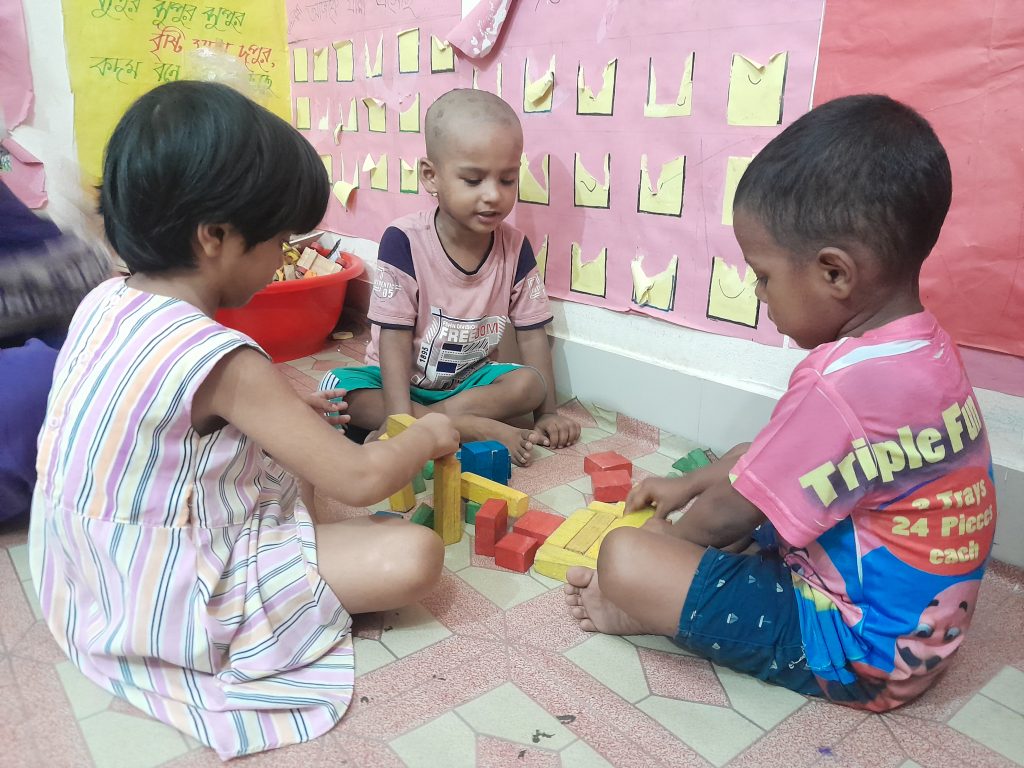How Teachers Can Scaffold is an imperative technique that impacts on child development. Scaffolding is a powerful teaching strategy that helps children learn more effectively by providing temporary support structures that guide them through the learning process. This post depicts how teachers can scaffold children so that they can realize their potential in optimal level.

Table of Content
- Understand the Child’s Current Level
- Break Tasks into Smaller Steps
- Model the Desired Behavior
- Use Visual and Verbal Prompts
- Encourage Peer Support
- Gradually Reduce Support
- Provide Continuous Feedback
- Create a Safe Learning Environment
- Conclusion
Teachers can scaffold learners and use their potential in solving problems by providing little supports to attack the problems and thus learners can construct new knowledge. Once the child becomes confident and capable, the scaffold is gradually removed, allowing independent learning. Let’s explore how teachers can implement scaffolding effectively in the classroom.
Understand the Child’s Current Level That is Important How Teachers Can Scaffold
To figuring out the position of learners in their learning route would be introducing step of scaffolding. Teachers must identify what a child can do independently, what they can do with help, and what they cannot yet do. This is often referred to as the Zone of Proximal Development (ZPD) a concept introduced by psychologist Lev Vygotsky. Effective scaffolding targets this “just right” learning zone.
Break Tasks into Smaller Steps for Getting How Teachers Can Scaffold
Complex tasks can be overwhelming, especially for younger learners. The learners may not be able to attack the whole problem. So, teachers should split up the problem into smaller steps and thus learners can go forward step by step. For example, instead of asking a child to write a full story, the teacher might first guide them in brainstorming ideas, then help them plan the beginning, middle, and end before writing full sentences.
Model the Desired Behavior is Significant How Teachers Can Scaffold
Setting the example to follow would be a very practical scaffolding technique. Teachers can demonstrate how to solve a problem, read a paragraph, or structure a sentence. This gives children a clear example to follow. Think-aloud strategies, where teachers verbalize their thought process while performing a task, are especially helpful.
Use Visual and Verbal Prompts
Visual aids such as charts, diagrams, and graphic organizers provide structure for children to organize their thoughts. Verbal prompts like asking guiding questions or offering sentence starters can help children think critically without giving away the answer.
Encourage Peer Support
Scaffolding doesn’t always have to come directly from the teacher. Pairing children with peers for collaborative learning can promote shared responsibility and mutual support. Following peer is the easier model for the learners which is doable without daunting.
Gradually Reduce Support
As children gain confidence and skill, it’s important to gradually withdraw the support. This could mean offering fewer hints, asking more open-ended questions, or giving more space for independent work. The goal is always to move the child toward autonomy.
Provide Continuous Feedback How Teachers Can Scaffold
Feedback is essential during scaffolding. Nevertheless, particular feedback on what has been achieved and how the next to be done and encouraging for the rest of the task is very effective feedback. Rather than simply saying “good job,” a teacher might say, “I like how you used details in that sentence can you add even more to the next one?”
Create a Safe Learning Environment How Teachers Can Scaffold
Children are more willing to take risks and accept challenges when they feel emotionally safe. Teachers can scaffold not just academic learning but also confidence by celebrating effort, normalizing mistakes, and building trusting relationships. If require more information Click here.
Conclusion on How Teachers Can Scaffold
Scaffolding would be workable while it fits with the specific needs of the child and it is provided with soft modes. When done effectively, it empowers children to take ownership of their learning and grow into independent thinkers. For teachers, scaffolding is not just about guiding it’s about believing in each child’s potential and helping them climb, step by step, toward success. If you need more Click here.
This matter is very important for child’s learning.
Thanks for acknowledgement.
Pingback: Questioning by Children: The Gateway to Learning - My Blog | My BlogMy Blog
Pingback: How to Approaching Human Learning Cognition and Schooling - ECD Explorer